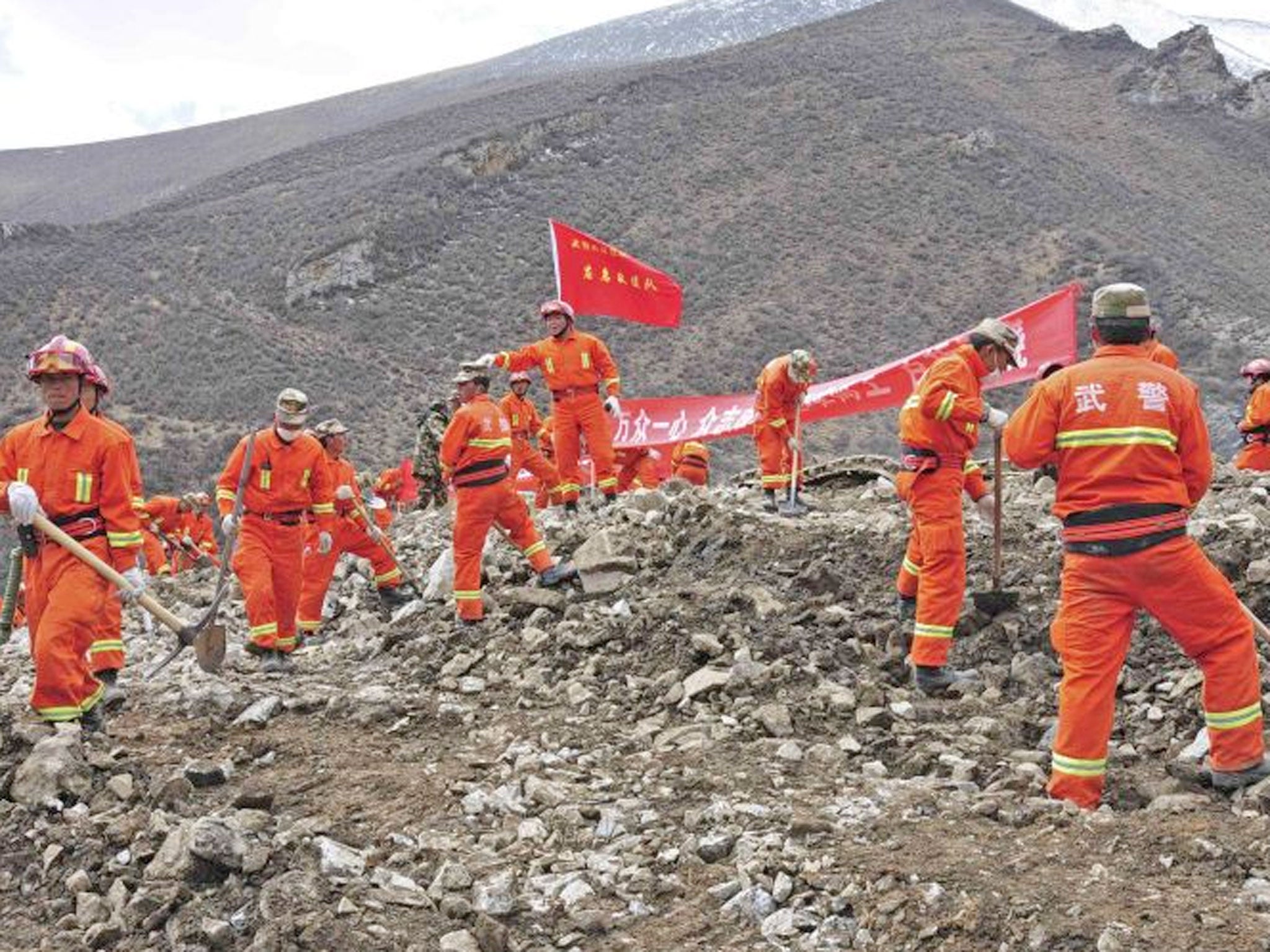Tibet landslide kills scores of gold-miners
Environmental damage caused an avalanche of mud, rock and debris, say China's critics

Rescuers digging for victims of a massive landslide at a gold-mining site in Tibet found just one body yesterday, a day after 83 workers were buried by two million cubic metres of mud, rock and debris. The avalanche swept through the mine near the village of Gyama in Lhasa's Maizhokunggar district covering an area of one and a half square miles.
As night fell, more than 3,000 rescuers equipped with sniffer dogs were struggling to find the miners. The sole body found was retrieved at 5.35pm, nearly 36 hours after the landslide slammed through the area and buried the workers, who were believed to have been sleeping in their tents at the time. Only two of their number, from the China National Gold Group Corp – a state owned enterprise – were Tibetan; the rest were Han Chinese.
Beijing says the cause of the mudslide is yet to be fully investigated, although state media say it was the result of a "natural disaster", without giving specifics. The Chinese government claims the reason for the heavy mining activity, which increases the risk of landslides in the already precarious region, is to raise living standards and create economic growth. Many Tibetans vehemently disagree and claim any wealth created is channelled straight to Beijing.
The disaster comes three weeks after Tibetan Uprising Day, which marks the 1959 revolt against Chinese rule in Lhasa. During the last two years, more than 100 Tibetans have set themselves on fire to protest against the Chinese government and there is significant unrest in the Tibetan community over the exploitation of their vast mineral wealth – worth $100bn, according to Xinhua News Agency.
Chinese security forces have occupied Lhasa since riots broke out there in 2008. The Dalai Lama, the exiled spiritual leader of Tibet, has frequently warned against mining in the area where the disaster occurred.
The Tibetan writer Tsering Woeser, who has been following mining development in Gyama and the surrounding areas since 2007, said China's powerful but resource-hungry state-owned companies were ruining the landscape. "Unchecked mining has polluted water, sickened animals and humans, dislocated herdsmen and now caused a massive mudslide," Ms Woeser posted on her blog on Saturday.
Tens of millions of tons of copper, lead, zinc and iron ore can be found in the region, still one of the poorest in China despite its mineral wealth. The complaints of local residents that they get little of the wealth extracted by government companies, most of which flows to distant Beijing, reflects a key source of anti-Chinese anger in the area.
Wangchuk Tseten, a Tibetan scholar at Northwest University of Nationalities in Lanzhou, the capital of Gansu province, said he was most worried about the environment. "The Tibetan plateau is considered the lungs of Asia," he said. "Those short-sighted mining activities chase quick benefits but ignore the environment for future generations."
China's President, Xi Jinping, who was on an official trip to the Republic of Congo, and Premier Li Keqiang have ordered regional authorities to "spare no efforts" in their rescue work, according to state media.
Subscribe to Independent Premium to bookmark this article
Want to bookmark your favourite articles and stories to read or reference later? Start your Independent Premium subscription today.

Join our commenting forum
Join thought-provoking conversations, follow other Independent readers and see their replies